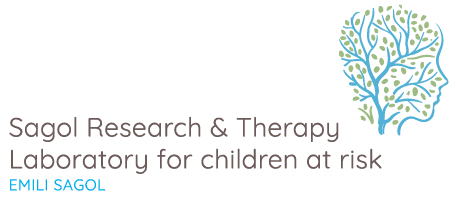CU BANGKOK
During the first semester of 2016, a creative arts therapies introductory course was offered to 16 CU Ph.D. students. This course was the first step in the collaboration between the Graduate School of Creative Arts Therapies at the University of Haifa (UH), and the Humanities and Arts Faculty at Chulalongkorn University (CU), to develop a creative arts therapies program for human health care practitioners in Thailand. The 48-hour course covered the theoretical background of expressive art therapies (e.g., art as therapy vs. therapy as art), basic therapeutic concepts (e.g., containment, transference and counter-transference, and corrective experience, etc.) and intervention techniques (e.g., the use of drawings for diagnostic and therapeutic purposes, the use of visual arts or movement in treating sexually abused children). One of the objectives of the course was to establish a relationship between HU and CU to further cross-cultural research in the field of creative art therapies.
To view the presentation, please click here
Buguruni, School for the Deaf, Tanzania
As part of their specialization in the Creative Arts Therapies, groups of graduate students traveled to Dar es Salaam, Tanzania, to work in the Buguruni boarding school for deaf children. The students lived together in an apartment in the boarding school which enabled them to work at all hours of the day with individual children and to enter the classrooms and work in group settings. In addition, the students delivered a course to the school teachers using creative tools and techniques in the classroom. Those teachers who participated in the course received a certificate from the Division of Continuing Education in the Faculty of Social Welfare and Health Sciences, University of Haifa. The deaf children's experiences (who have been separated from their parents for many years and have become socially isolated because of the perception that deafness is shameful), as well as the teachers' sense of pride in obtaining the certification (which they claim is their first form of recognized certification - the status of a teacher in considered to be very low in Tanzania) boosted their sense of value and contributed to a more positive relationship between the children and their teachers. The students' experiences and the significance of the project for them can be seen in a presentation they prepared.
Graduation Movie Tanzania - 2015 from Emili Sagol Research Center on Vimeo.
To view the presentation, please click here (only in English).
Creative Arts Therapies Psychosocial Interventions, Ormoc, Philippines
On November 8, 2013, the typhoon Yolanda hit the Philippines. Over half a million people were left without shelter, and many were injured and died. The city of Ormoc was one of the hardest hit areas - the center of the storm moved directly over the city and caused damage and destruction to more than 97% of the city's buildings. The severe damage to the local electricity and water supply systems in Ormoc, as well as the loss of income from agriculture and fishing industries, are just a few examples of the extent to the destruction.
The link to the short presentation on the psycho-social intervention project, led by the humanitarian organization IsraAid in Ormac, provides viewers with a glimpse into the work of Dr. Ruth Gottfried, a researcher at the Emili Sagol Creative Arts Therapies Research Centerand a M.A. and Ph.D. graduate of the Graduate School of Creative Arts Therapies, University of Haifa. The lectures and workshops described in the presentation deal with the subject of "abused and neglected children and youth" and were delivered to professionals from the education, welfare, health and homeland security fields. Dr. Tami Bar-On, a researcher and lecturer at the Graduate School of Creative Arts Therapies at the University of Haifa, coordinated Israel's project in the Philippines. Throughout the year, Dr. Bar-On and many students and researchers volunteered to deliver lectures and workshops on topics relevant to professionals in Ormac in the wake of the destructive typhoon.
To view the presentation, please click here (only in English).
Kakuma Refugee Camp, Kenya
The Kakuma refugee camp in western Kenya is home to tens of thousands of refugees, mostly from southern Sudan.
The fighting that broke out in southern Sudan in December 2013 forced many residents to return to refugee status. Altogether, more than 300,000 people from southern Sudan have fled to neighboring countries over the past few years. There are approximately 179,000 people residing in the Kakuma camp, including some 89,000 refugees from southern Sudan, of whom close to 50,000 new refugees have returned due tothe war.
Most of the refugees come from southern Sudan, but others also arrive from Ethiopia and Somalia. About 12,000 of the camp's residents are unaccompanied children who live there without their parents or other family members. These are children who fled their countries alone and are exposed to the many difficulties in the camp. Often they become targets and victims of exploitation and violence.
The link to the short film about the Kakuma Project provides viewers with a glimpse into the students' activities at Kakuma (graduates of the School of Creative Arts Therapies) as they worked with a group of refugees living in the camp. This group of refugees was trained by our students and learned how to treat trauma victims through the creative arts. The motivation and incentive to get involved in such a project and its significance for us as a nation following our history and Holocaust persecution is very relevant today.






